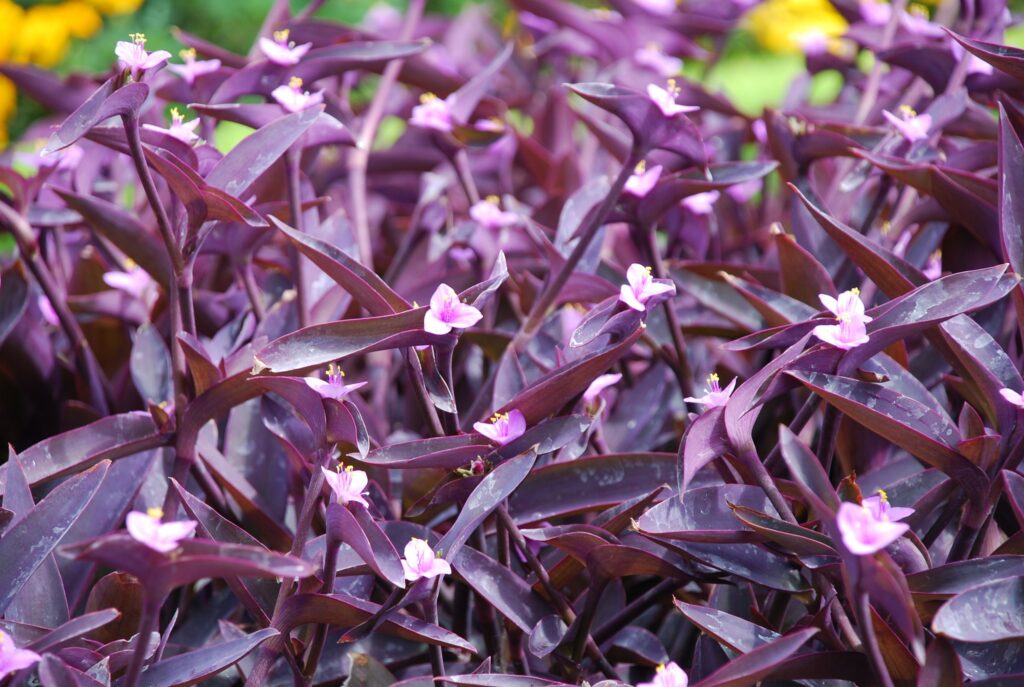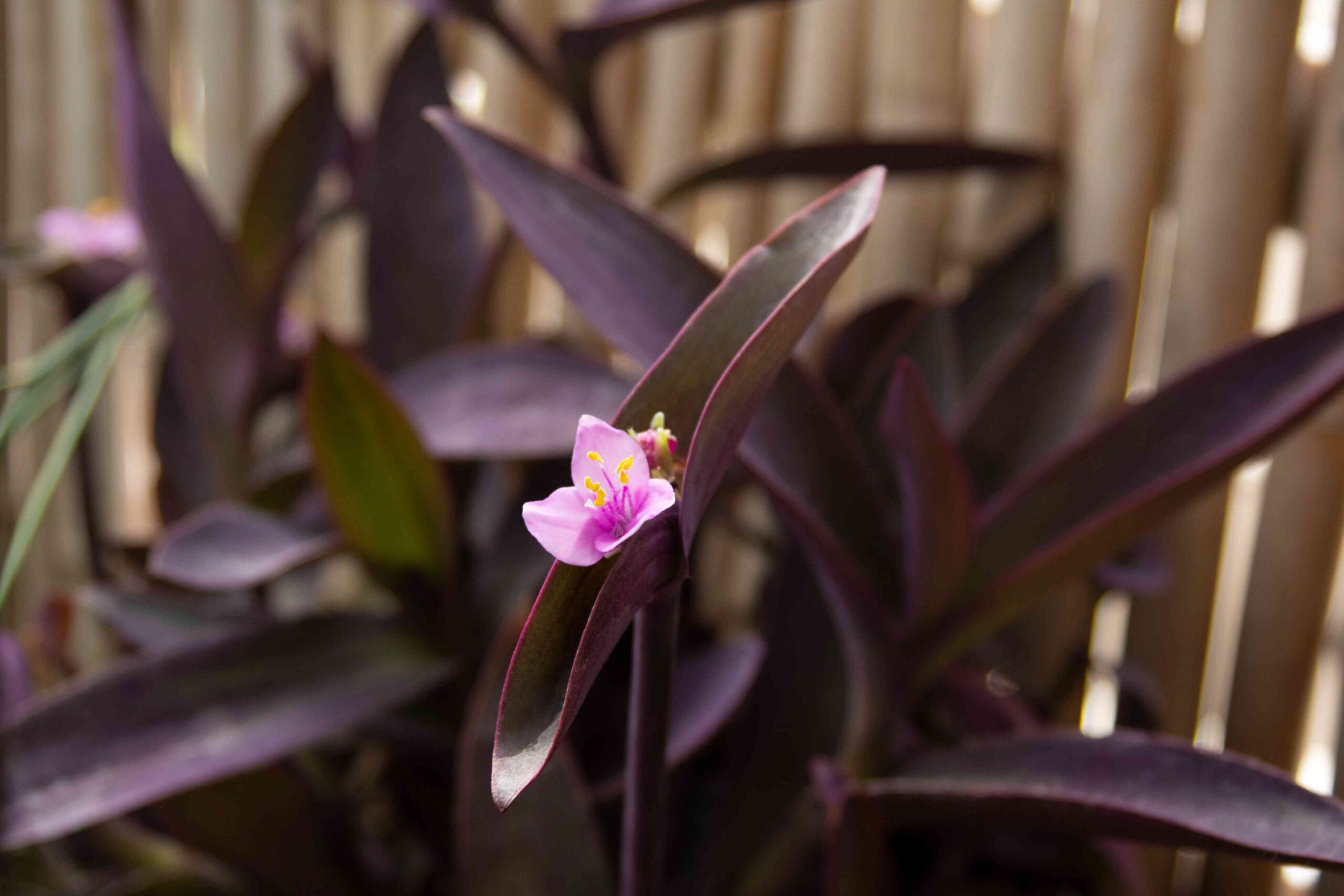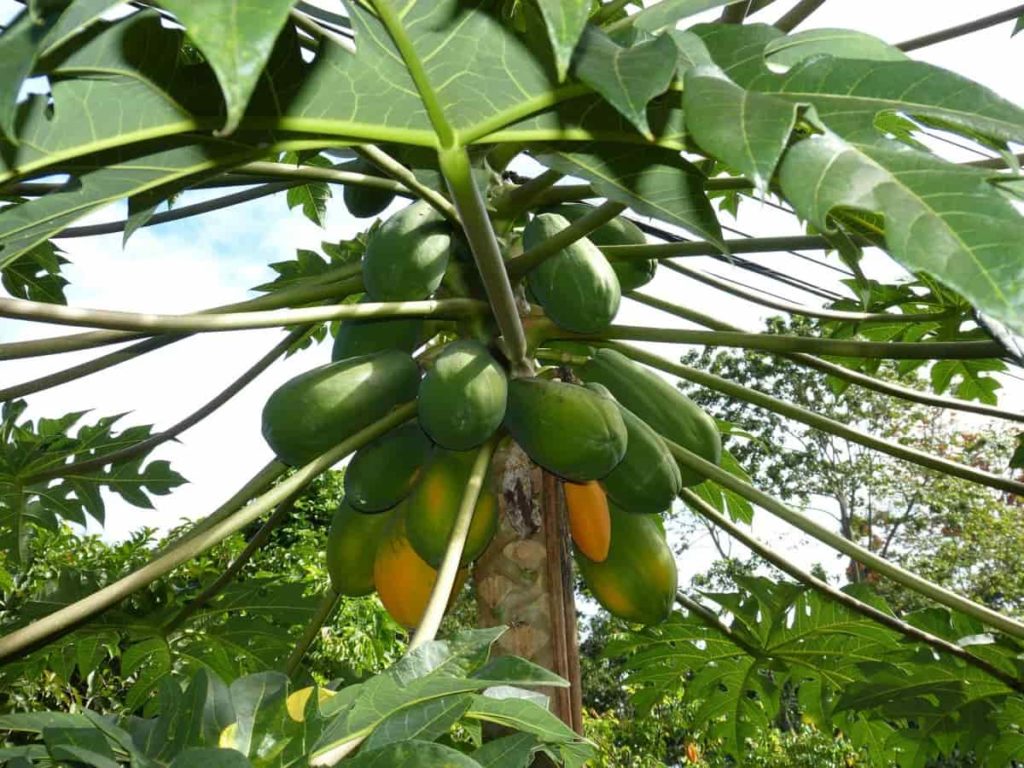
If you ask The Southern Living Garden Book to point you toward a hardy plant with a stunning color payoff, it will send you straight to the purple heart plant. Also known as Tradescantia pallida ‘Purple Heart,‘ it’s a beautiful, hardy perennial with long, trailing stems that resemble rambling vines. Purple hearts are often planted in pots or displayed in hanging baskets. They’re aptly named, as their foliage appears in silvery purple and violet hues.
Tradescantia species are perennials in the family Commelinaceae, also known as the spiderwort family. Tradescantia pallida ‘Purple Heart’ was known as Setcreasea pallida ‘Purple Heart’ and is sometimes also called Purple Queen. Purple heart is native to the Gulf Coast region of Mexico and can grow one to two feet tall and wide. Its purple leaves are long and oval-shaped, and it produces small purple flowers during the summer months. This striking appearance makes it perfect for common use as an ornamental plant in gardens and along borders or driveways.
Plant Attributes
Most varieties of purple heart plant are virtually indestructible with long, trailing stems. This creeping plant grows to 18 inches tall and 12 inches wide with stems that tend to flop. The leaves are oval and deep purple with tiny pink flowers in summer. In winter, frost may kill tops of purple heart plants making them generally unattractive, but recovery is fast in warm weather. Use as ground cover, for bedding, or in pots. Plant them in full sun or light shade. The more sun they get, the darker the purple color will be. Cuttings of purple heart plant root quickly, which makes them a cinch to propagate in a glass of water. Deer don’t normally browse these plants.
Purple Heart Plant Care
“Types grown as houseplants should be given bright indirect light and kept fairly moist; feed them with a general-purpose liquid houseplant fertilizer twice a month from spring through fall, once a month in winter,” according to The Southern Living Garden Book. While it is drought tolerant, when planted outdoors purple heart grows best with regular watering and a balance of full sun and light shade.
While these plants are popular for pots and hanging baskets, because of their hardiness they are also sometimes employed as ground cover plantings. If used as a ground cover, Tradescantia pallida species should be approached with caution. That’s because the most vigorous types can become invasive. Be sure to choose a less rambling type and be an attentive gardener to keep it corralled in your yard.
Light
Growing purple heart plant in full sun is what will help it to develop the bright purple color. Growing it in shade will result in it appearing more greenish gray than purple.
Soil
It needs rich, moist, well-draining soil to grow. And be careful with the stems; they are notoriously fragile and can break off very easily.
Water
While it is drought tolerant, when planted outdoors purple heart grows best with regular watering and a balance of full sun and light shade.
Temperature and Humidity
Native to Mexico, the purple heart plant enjoys a warm and humid environment found in Southern gardens. It is sold as a houseplant in cooler climates.
Types of Tradescantia
Beyond purple heart plant, other Tradescantia species are also popular plantings in the region. Tradescantia pallida ‘Variegata’ produces striped pink-and-red foliage. It can be used in pots or as ground cover, and it thrives in full sun with moderate water. Tradescantia spathacea (Rhoeo spathacea), also known as Moses in the Basket, has sword-shaped purple-and-green foliage. Tradescantia virginiana, a Southern classic, is also known as spiderwort. Its foliage has a grassy appearance, and it produces short-lived flowers in a rainbow of shades, many of which bloom for only one day.
Pruning
Pinch the purple heart plant back after it blooms, when it becomes too bushy, or if stems look thin and spindly. This fast-growing plant will respond quickly.
Propagating Purple Heart
Seedlings for purple heart plants can sometimes be difficult to come by. This plant can be easily propagated from any part of the plant by placing it in the right soil or water. Here’s how to do it.
- Using clippers or scissors, trim the stem of a purple heart plant about six inches long.
- Remove the lower leaves and place the clipping in a glass of water in sunlight.
- Roots will appear in a few days. Once the roots are visible, plant it in moist soil that drains well. After a few weeks of growth and root establishment, plant it in the garden.
Overwintering
Purple heart is capable of surviving mild winters, but the tops of the plants are typically killed off by frost. Fortunately, it may sprout again from its roots when spring returns. Nurturing a purple heart as a houseplant is also a great option if you want to avoid this winter death. It will thrive in an indoor environment.
Common Pests & Plant Diseases
Deer usually ignore these plants and aren’t known to browse them in the garden. However, there are a few pests that love to make purple heart plants their home. Look out for scales, mealybugs, aphids, and vine weevils, as well as the usual suspects, caterpillars, slugs, and snails.


